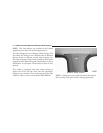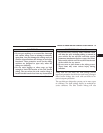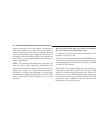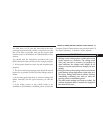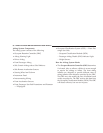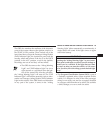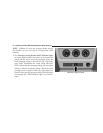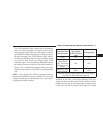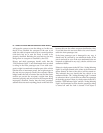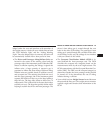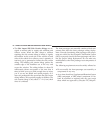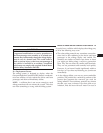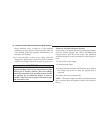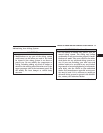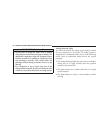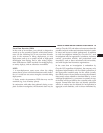
will cause the system to turn the airbag on. In this case,
the OCS has classified the occupant of the seat as an
adult. An adult occupant needs to sit in a normal position
(with their feet on or near the floor) in order to be
properly classified. Reclining the seat back too far may
change how an occupant is classified by the OCS.
Drivers and adult passengers should verify that the
“PAD Indicator Light” is not illuminated when an adult
is riding in the front passenger seat. If an adult occu-
pant’s weight is transferred to another part of the vehicle
(like the door or instrument panel), the weight sensors in
the seat may not properly classify the occupant. Objects
lodged under the seat or between the seat and the center
console can prevent the occupant’s weight from being
measured properly and may result in the occupant being
improperly classified. Ensure that the front passenger
seatback does not touch anything placed on the back seat
because this can also affect occupant classification. Also,
if you fold down the rear seat check to be sure it doesn’t
touch the front passenger seat.
If the front passenger seat is damaged in any way, it
should only be serviced by an authorized dealer. If the
seat is removed (or even if the seat attachment bolts are
loosened or tightened in any way), take the vehicle to an
authorized dealer.
If there is a fault present in the OCS, the “Airbag Warning
Light” (a red light located in the center of the instrument
cluster directly in front of the driver) will be turned on.
This indicates that you should take the vehicle to an
authorized dealer. The “Airbag Warning Light” is turned
on whenever there is a fault that can affect the operation
of the airbag system. If there is a fault present in the OCS,
both the “PAD Indicator Light” and the “Airbag Warning
Light” are illuminated to show that the passenger airbag
is turned off until the fault is cleared. If an object is
62 THINGS TO KNOW BEFORE STARTING YOUR VEHICLE



